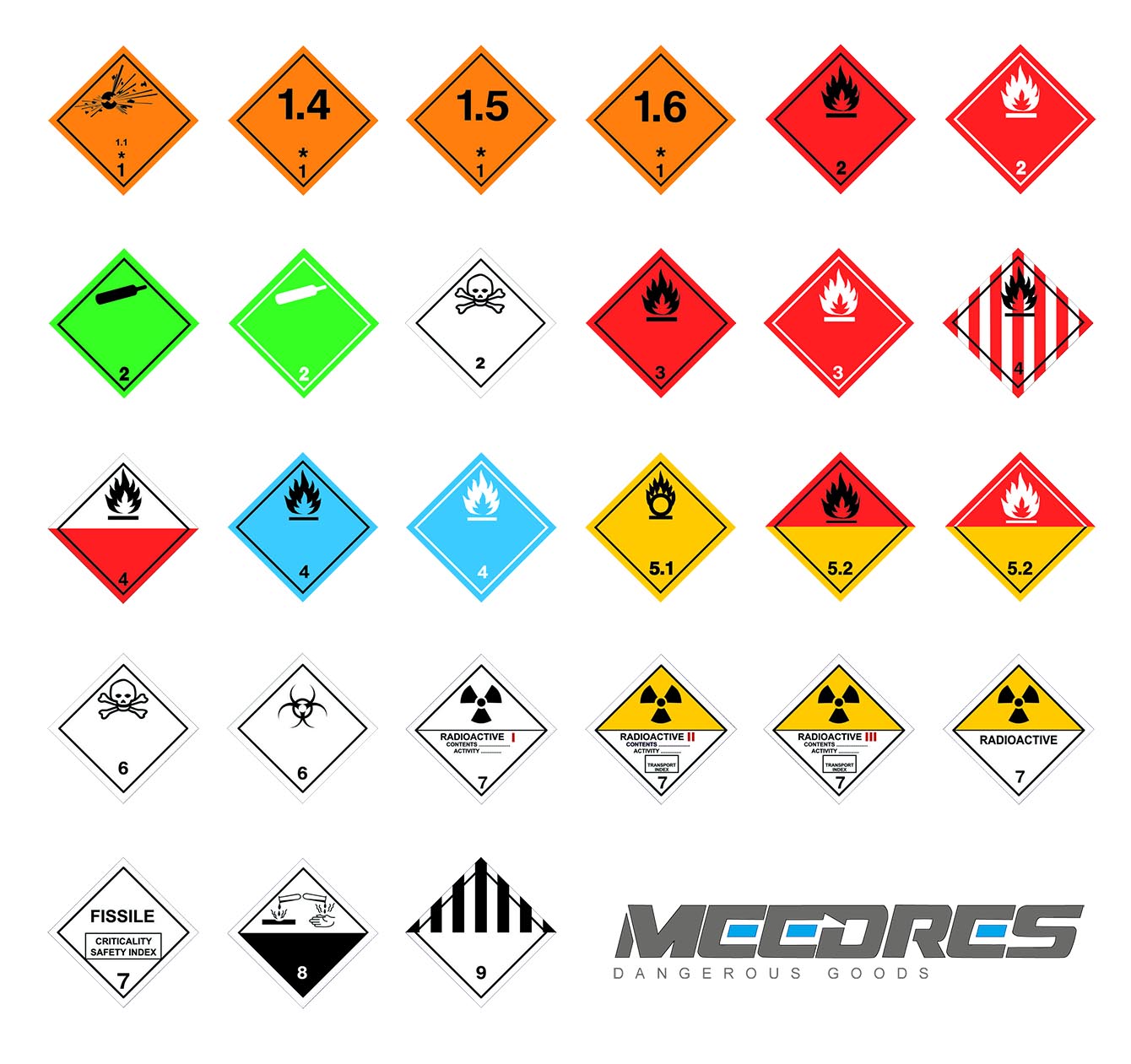Classes of hazard with dangerous goods
Dangerous goods are divided into 9 hazard classes depending on the nature of the hazard, some hazard classes are further sub-divided into hazard divisions due to the wide scope of the class. Classes with sub-divisions are marked with the number, e.g. 3rd class or class 2.1. The order in which they are numbered is for convenience and does not imply a relative degree of danger.
The first class includes explosives. Their labelling is the most complex one – first, class identification is used, then the class is divided into six different divisions (1.1 – 1.6), and then into compatibility groups. Different divisions include explosives based on their properties: how easily can an explosion be initiated, whether there is a mass explosion hazard (a mass explosion is one which affects almost entire load virtually instantaneously) or negligible probability of accidental initiation or propagation. In conclusion, class 1 lists substances and materials from industrial explosives and ammunition to spark plugs and signal smokes.
The second class includes gases, they are divided into divisions based on additional hazard: 2.1 – flammable gas, 2.2 – non-flammable, non-toxic gas and 2.3 – toxic gas. The list of gases includes compressed gases, liquid gases and aerosols, in which case the active ingredient is being transported in the gas.
Flammable gases are used industrially to cut metal, to grill at home, to heat up soup when camping and to light the cigarette with a lighter. Flammable aerosols also belong here.
Non-flammable and non-toxic gases are used in many areas.
Inert gas is used to extinguish fires or in the metal industry to deter oxygen out of a room. Additionally, this class includes (medical) oxygen. The medical field also uses nitrogen, often in liquid form to sustain materials in low temperature while storing and transporting.
Toxic gases can be found less in our daily lives. These are more industrial outcomes used in a controlled environment, e.g. in the laboratories of analytical chemistry. Finding this class of dangerous goods in the local supermarket is not likely.
The third class includes flammable liquids, such as glue, dissolvent, paint and gasoline. Substances used in home such as perfumes, lacquers or strong alcoholic spirits (alcohol concentration of over 70%) belong into the third class. This is one of the most known classes of dangerous goods.
The fourth class includes flammable solids. The first division includes flammable solids, for example matches include into this division.
Class 4.2 includes substances liable to spontaneous combustion, they heat up in contact with air and are then liable to catch fire. This class includes different types of phosphorus, oily rags, which when left into a pile will heat up and eventually catch fire.
The third division of class four includes substances which when in contact with water, emit flammable gases. This division includes alkaline metals, such as sodium, potassium and lithium. If these substances catch fire, it is extremely important to avoid water based extinguishing agents. It is also crucial to avoid contact with water while transporting, otherwise the situation can literally explode.
The fifth class includes substances that react to other substances.
The first division (5.1) includes oxidizing substances which may generally cause or contribute to the combustion of other material by yielding oxygen. This includes oxygen release systems that contribute to breathing, such as oxygen generators in airplanes or medical breathing devices, but also cleaning chemicals that fight dirt using the oxidizing process.
Class 5.2 includes organic peroxides. These compounds react easily to other substances and are often used in multicomponent chemicals, such as lacquer, resin, filler – in which one component incurs a faster hardening in the other component. Hardeners are often organic peroxides. As these reactions often exude heat, there is a risk of ignition.
The sixth class includes toxic and infectious substances.
6.1 includes toxic substances which are liable to cause death or injury or harm human health if swallowed, inhaled or contacted by the skin. Substances from everyday life in this division include pest control substances.
6.2 includes substances belonging to the medical field. This division includes infectious substances that are known or are reasonably expected to contain pathogens. Therefore, if there is a need to deliver patient specimens (either human or animal) and a doctor’s confirmation that these specimens are safe for other living beings, then these substances are sub-divided into this division.
The seventh class also includes substances which are liable to harm human health – radioactive hazards. This division includes nuclear materials, x-ray machinery, substances used in radiation therapy, tritium found in self-glowing paint and americium found in some smoke detectors.
The eight grade includes corrosive substances such as strong base and acid which can be found in pipe cleaners and car batteries. For example mercury is extremely acidic for aluminum. Due to this property transporting mercury in aviation is very strictly regulated, whether it is found in metal or in measuring tools, such as thermometer or barometer.
The ninth class includes everything that doesn’t fit into the previous classes. These are substances specific to means of transportation such as magnets and dry ice which are considered hazardous in aviation, but also generally dangerous substances such as environmentally dangerous substances and lithium batteries used in almost every modern electronic gadget and appliance.
Sometimes substances or articles can be categorized in several hazard classes. The requirements of transporting dangerous substances in each hazard class depend on how dangerous the substance is and how it is transported. This is why it is difficult to orientate in this field without training and experience.

